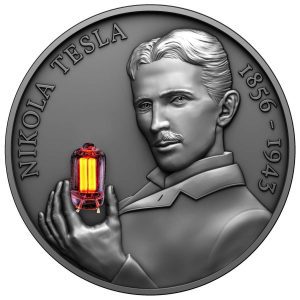Fool’s gold, known as pyrite, is a gold-colored mineral often mistaken for real gold. Unlike real gold, pyrite is relatively worthless because it is abundant and lacks significant industrial use. Investments in hot stocks that seem too good to be true, but then crash, can be called fool’s gold.
What is Fool’s gold?
The iron sulfide mineral is known as “fool’s gold.” Fool’s gold can be pyrite, chalcopyrite, or weathered mica. Pyrite is the most common.
These minerals look like gold but flake or crumble when poked, unlike real gold which has indents. Real gold leaves a golden streak on unglazed porcelain, while pyrite and chalcopyrite leave a dark streak, and mica leaves a white streak.

Iron Pyrite
Iron pyrite is a compound of iron and sulfide that looks like real gold but is much less valuable. It consists of iron and sulfur atoms with the chemical formula FeS2, not pure gold.
It is a naturally occurring iron ore that has a golden yellow color and metallic luster, often leading to confusion with real gold. Unlike gold, it’s brittle, harder, and less dense. Moreover, real gold is soft and can easily be dented with a fingernail or knife.
| Characteristics | Pyrite (Fool’s Gold) | Gold |
|---|---|---|
| Color | Brassy, greenish-yellow | Bright, pure yellow |
| Luster | Polished, shiny | Subdued, metallic |
| Shape | Sharp-edged crystals | Rounded nuggets, flakes, or grains |
| Edges | Angular, sharp | Rounded, soft |
| Composition | Iron sulfide (FeS2) | Pure gold (Au) |
| Value | Much less valuable | Highly valuable |
Pyrite price per gram
The cost of pyrite in the UK ranges from approximately £0.005 to £1.00 per gram, varying with quantity and quality. Factors such as purity, market demand, location, and economic conditions also influence its price.
Fool’s gold or real gold?
Telling the difference between fool’s gold and real gold is quite straightforward. Gold is denser than pyrite, so holding a small lump of either metal will feel different. Non-destructive tests are great ways to check if you’ve found real gold without damaging it.
Another method is to test the softness and malleability of the metal. Gold is very soft and can be easily dented or marked with a fingernail or knife, whereas pyrite is much harder and won’t scratch as easily.
Applications
Pyrite ( Fool’s gold) has its commercial and industrial uses. However, It has historical value and cultural symbolism, often representing good luck or prosperity in many societies.
Industrial Uses
Steel Production: Pyrite serves as a crucial source of sulfuric acid, vital in the production of steel.
Fertilizers: It is utilized as a source of sulfur, essential for plant growth and the production of fertilizers.
Pigments: You can use them as a pigment in paint, coatings, and other materials, providing a distinctive metallic luster.
Catalysts: Pyrite acts as a catalyst in various industrial processes, facilitating chemical reactions in manufacturing.
Commercial Uses
Jewelry: Its attractive appearance and affordability make it popular in jewelry.
Collectibles: Mineral enthusiasts collect pyrite for its natural beauty and use it in decorative displays.
Decorative Items: Pyrite is used in decorative items such as vases, figurines, and ornaments, adding a touch of natural elegance.
Historical and Cultural Significance
Ancient Uses: Pyrite has been used since ancient times for jewelry, tools, and ceremonial objects due to its metallic appearance.
Cultural Symbolism: It holds cultural and symbolic significance in many societies, often representing good luck, prosperity, or protection.
Historical Artifacts: Reflecting its historical value and aesthetic appeal, pyrite is found in historical artifacts like coins, medals, and collectibles.





